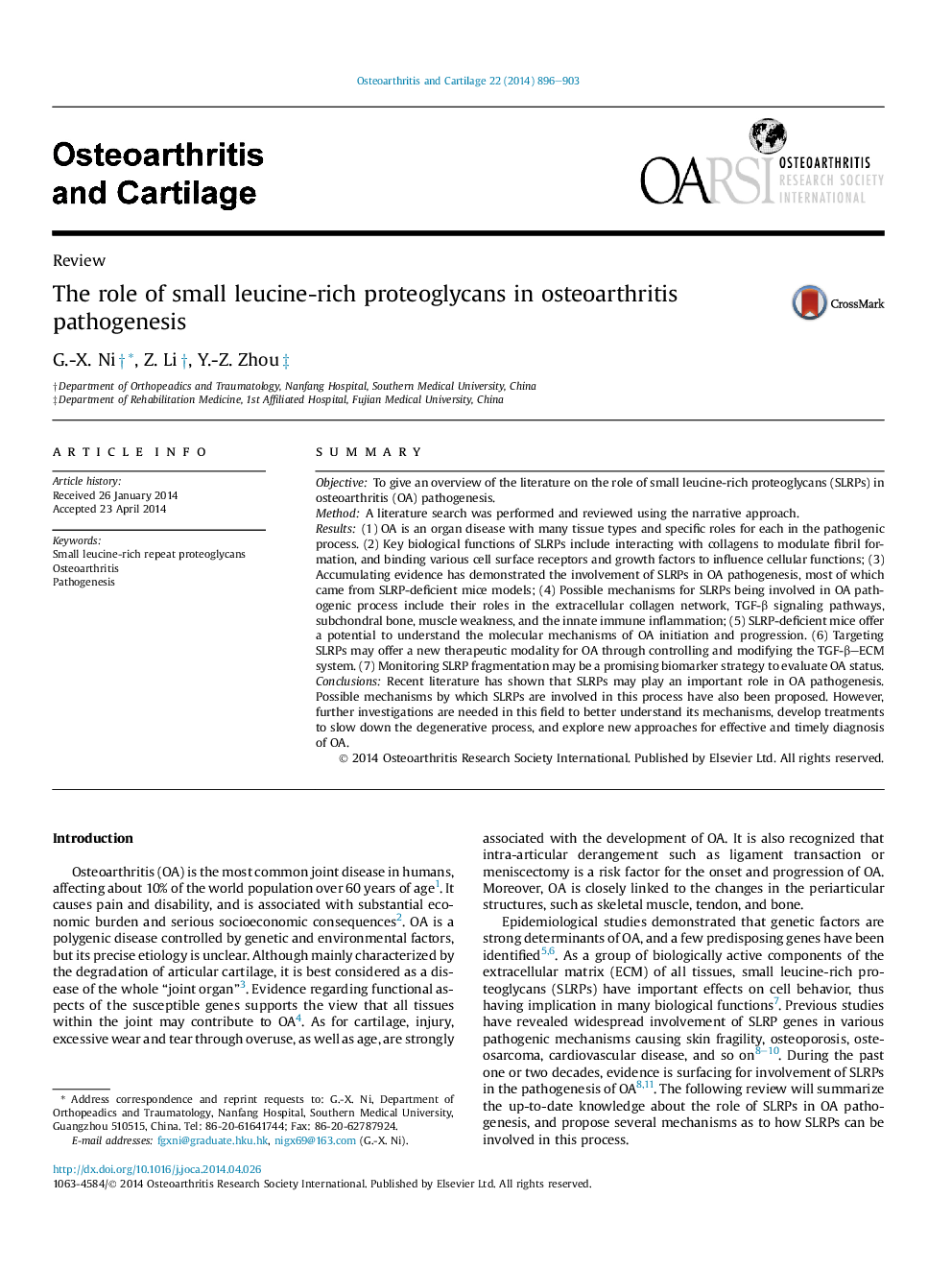| Article ID | Journal | Published Year | Pages | File Type |
|---|---|---|---|---|
| 3379366 | Osteoarthritis and Cartilage | 2014 | 8 Pages |
SummaryObjectiveTo give an overview of the literature on the role of small leucine-rich proteoglycans (SLRPs) in osteoarthritis (OA) pathogenesis.MethodA literature search was performed and reviewed using the narrative approach.Results(1) OA is an organ disease with many tissue types and specific roles for each in the pathogenic process. (2) Key biological functions of SLRPs include interacting with collagens to modulate fibril formation, and binding various cell surface receptors and growth factors to influence cellular functions; (3) Accumulating evidence has demonstrated the involvement of SLRPs in OA pathogenesis, most of which came from SLRP-deficient mice models; (4) Possible mechanisms for SLRPs being involved in OA pathogenic process include their roles in the extracellular collagen network, TGF-β signaling pathways, subchondral bone, muscle weakness, and the innate immune inflammation; (5) SLRP-deficient mice offer a potential to understand the molecular mechanisms of OA initiation and progression. (6) Targeting SLRPs may offer a new therapeutic modality for OA through controlling and modifying the TGF-β–ECM system. (7) Monitoring SLRP fragmentation may be a promising biomarker strategy to evaluate OA status.ConclusionsRecent literature has shown that SLRPs may play an important role in OA pathogenesis. Possible mechanisms by which SLRPs are involved in this process have also been proposed. However, further investigations are needed in this field to better understand its mechanisms, develop treatments to slow down the degenerative process, and explore new approaches for effective and timely diagnosis of OA.
